20 Nights / 21 Days

Excursion India invites you to be art of a traveling tradition that dates back 5000 years. Follow in the footsteps of these historic wayfarers for a kaleidoscopic look at the timeless cultural fabric that binds these fascinating people together.
We have designed a special Program based on "UNESCO World Heritage Sites" in India.
India is the proud owner of umpteen world heritage sites that draws tourists from all across the globe to India. These sites form a part of the cultural and natural heritage and are considered to be of great universal value. There are certain monuments in India that have been selected by UNESCO to encourage protection and preservation of cultural sites considered to be of outstanding value to humanity. A visit to such sites makes us updated with our glorious history and grants us the opportunity to listen to the grand narration of the spectacular monuments.
The cultural heritage of India is known the world over in the form of its historical monuments, forts, palaces and castles. Keeping in mind this rich historical legacy; UNESCO enlisted Indian amongst the countries having the places, which were given the status of World Heritage Sites depending on their historical importance and contribution to the country's royal and memorable past.
Flight to Delhi. On arrival in India you will be greeted and escorted by Indo Asia Tour's staff to your hotel.
In its 3000 years of existence; seven cities have risen where the present capital of India stands. Here you'll encounter a fascinating blend of the ancient and the contemporary. Where government buildings, medieval palaces and bazaars exist beside a modern metropolis. Delhi is a city waiting to be explored.
Overnight in the Hotel.
Rooms will be available from 1200 Noon.
After breakfast enjoy half-day City tour of Old Delhi.
Visit the Red Fort (World Heritage Monument) the 17th century imposing fortress built in red sandstone is surrounded by a huge 33m high boundary wall. Inside are exquisite palaces and beautiful gardens.
Opposite the Red Fort lies Jama Masjid (Friday Mosque) made of red sandstone and white marble, completed in 1656 at a cost of one million Rupees has perfect proportions. India's largest mosque where more than 20.000 people can kneel in prayer. The interior of the prayer hall is divided into aisles by arches. The walls and floors are of marble inlay panels.
Also visit the Raj Ghat on the banks of the river Yamuna is Mahatma Gandhi's Memorial, where he was cremated following his assassination in January 1948. The memorial lies in the midst of landscaped gardens and made of a simple square platform of black marble inscribed with his last words "Hey Ram". An eternal flame burns 24 hours. Afternoon is free.
Dinner & Overnight in the Hotel.
Red Fort is closed on Mondays.
After breakfast drive through Lutyens Delhi and see India Gate Built of Bharatpur stone, commemorates the 70,000 Indian soldiers who died in the 1st world war. 13516 names of British and Indian soldiers killed in the Afghan War of 1919 are engraved on the arch and foundations. Photo stop at Rashtrapati Bhawan once the Viceroy's residence is now the official residence of the President of India.
Later in the afternoon explore New Delhi. Visit the Humayun's Tomb (World Heritage Site), built by his wife Haji Begum in the 16th. Century. An early example of Mughal architecture considered the predecessor of the Taj Mahal. The elements in its design a squat building, lighted by high arched entrances, topped by bulbous dome and surrounded by the char bagh (garden divided into quadrants), water channels and fountains.
Later visit the Qutub Minar (World Heritage Site) the landmark of Delhi, a huge tower of victory started in 1199 and completed in 1368. The minar is 72.5m high with a diameter at the base 14.4m and 2.7m at the top. The tower has 379 steps to the top.
Dinner & Overnight in the Hotel.
Morning transfer to the Railway Station to board the Train to Agra (0615 / 0812 hrs).
On arrival in Agra drive straight to Fatehpur Sikri (World Heritage Site), the beautiful and deserted medieval city built by Akbar the Great in the 16th century to serve as the capital of his vast empire. The complex consists of religious, residential and administrative buildings. The Mosque is considered a copy for the Mosque at Mecca and is extremely elegant, containing elements of Hindu and Persian design. Housed here is the Shrine of Sheikh Salim Chisti one of the greatest of Sufi saints of the Muslim world.
Later drive back to Agra & Check in at Hotel.
Afternoon is free.
Dinner & Overnight in the Hotel.
Agra stands on the right bank of the river Yamuna, was once the seat of the Mughal rulers, the zenith of art and an enshrined romance. A town famous for its beautiful medieval monuments. The passion of the Mughals for building endowed it with some of the loveliest buildings in the world.
After breakfast visit Taj Mahal (World Heritage Site) - A poignant poetry in marble, stands serene and awesome on a raised marble platform, by the banks of the Yamuna.
The most extravagant monument ever built for love is a tribute to the timelessness of art and love. The inimitable poem in white marble, one of the seven modern wonders of the world, the finest expression of love of Emperor Shah Jahan for his queen Mumtaz who died giving birth to their 14th child, is located on the banks of the Yamuna river here. The construction of the Taj had commenced in 1631AD and had ended in 1653AD. Workers were gathered from all over the country and from central Asia. About 20,000 people were recruited to translate this dream into reality. The main architect was Isa Khan who was brought from Iran.
In the afternoon visit the Agra Fort. (World Heritage Site)
Built by the great Emperor Akbar in 1565 AD, the fort is a masterpiece of design and construction. Within the fort are a number of exquisite buildings, including the Moti Masjid, Diwane-I-Am, Diwane-I-Khas and Musamman Burj, where the Emperor Shah Jahan died in imprisonment, besides Jahangir's Palace, Khaas Mahal and the Sheesh Mahal.
Later visit Sikandra. The mausoleum of the great Mughal King Akbar (1556 1605). Akbar began building it during his lifetime and his son, the Mughal Emperor Jahangir, completed it. It has a large arched entrance and green lawns, on which deer can be seen grazing, surround the tomb. The entrance is decorated with marble inlay work around the arch, and the inner surface of the dome of the tomb is decorated with images of flowers, geometric designs and Islamic calligraphy.
Dinner & Overnight in the Hotel.
IMP: Taj Mahal id closed on Friday.
After breakfast transfer to railway station to board Shatabdi Express at 0755 hrs to Jhansi. On arrival in Jhansi drive towards Khajuraho.
Khajuraho, home to the most famous erotic temples built in the 10 & 11th century by the Chandella Rulers, with the Vindhyan Hills as a backdrop. Of 85 temples only 20 survive. This is a world heritage site.
On arrival transfer to the Hotel.
After some rest visit the Eastern Group of temples are mainly dedicated to the Jain teachers - tirthankaras - The Parsvanatha Temple, the Adinatha Temple and the Santinatha Temple. There is a 4.5m statue of Adinatha in the main place of Jain worship. The temples are ornately carved on the outside with beautiful figures of Hindu gods, goddesses.
The Western Group consists of a group of artistic temples built in sandstone. The sculptures of Hindu deities, dancers and musicians appear to be so natural as if they would come alive any time. We will visit the Varaha Temple dedicated to Vishnu, and also the Lakshmana Temple also dedicated to Vishnu. It is one of the earliest of the western enclosure temples dating from 930 to 950 AD. The Kandariya Mahadeva Temple is not only the largest of the temples, it is also artistically and architecturally the most perfect. Built between 1025 and 1050 it represents Chandella art at its most finely developed phase. Dinner & Overnight in the Hotel.
After breakfast drive to Orchha.
On arrival check in at Hotel.
The word Orchha means 'hidden'. Situated on banks of the river Betwa, it used to be the capital of the region (Bundelkhand) but now is a small village. The palaces are of impressive size and there are pleasant views of the countryside from their upper levels.
After some rest, visit the Raj Mahal with its Hall of Private Audience and Public Audience and royal chambers with beautiful painted murals on the walls and ceilings of religious and secular themes. The Rai Parveen Mahal named after the musician courtesan (1592-1604). The Jahangir Mahal (7th century) palace built to commemorate the Emperor's visit.
Orchha also has a series of magnificent temples, dating back to the 17th century. They are still in use today and visited regularly by thousands of devotees. The soaring spires of Ram Raja Temple Dinner & Overnight in the Hotel.
After breakfast drive to Jhansi Railway station to Board the Train to Bhopal. (1056 hrs / 1405 hrs).
Bhopal, capital of Madhya Pradesh combines scenic beauty, historicity and modern urban planning. It is situated on the site of an 11th century city, Bhojapal, founded by Raja Bhoja.
Bhopal today presents a multi-faceted profile; the old city with its teeming market places and fine old mosques and palaces still bear the aristocratic imprint of its former rulers; among them the succession of powerful Begums who ruled Bhopal from 1819 to 1926. Equally impressive is the new city with its verdant, exquisitely laid out parks and gardens, broad avenues and streamlined modern edifices.
On arrival check in at Hotel.
After some rest Excursion to Bhimbetka. (World Heritage Site).
Bhimbetka Caves known for their prehistoric paintings, the famous Bhimbetka caves are located at about 46 kilometers south of Bhopal. The caves, surrounded by the northern fringe of the Vindhyan ranges, are believed to have provided shelter to the primitive man. The caves or the rock shelters belonging to the Neolithic age number more than 600. Inside most of these caves are the paintings that depict, in vivid panoramic detail, the life of the pre-historic cave dwellers. The oldest paintings are believed to be up to 12,000 years old. The caves lying in the rocky terrain of dense forest and craggy cliffs have become an invaluable chronicle in the history of man.
After visit of Bhimbetka Caves, drive back to Bhopal.
Dinner & Overnight in the Hotel.
After breakfast Full day excursion to Sanchi, & Udaigiri.
Sanchi - Located on the foot of a hill- Sanchi is 46 kms from Bhopal. Sanchi is a religious place with historical and Archaeological significance. Sanchi is a site for the numerous stupas which were built on a hill top. The place is related to Buddhism but not directly to the life of Buddha. It is more related to Ashoka than to Buddha. Ashoka built the first stupa and put up many pillars here. The crown of famous Ashoka pillars, with four lions standing back to back, has been adopted as the national emblem of India.
In Sanchi, visit The Great Sanchi Stupa & The Ashok Pillar.
The Great Sanchi Stupa (World Heritage Site) This probably is the most visited and most photographed structure in Madhya Pradesh. This dome shaped building and the panels are inscribed with many drawings that depict the life of Buddha. You will also find Brahmi script carved at different places in the stupa. The stupas of Sanchi have been recognized as world heritage site by UNESCO. The construction of the Stupa was approved by Emperor Ashoka in the third century. This hemispherical dome structure was built to house the relics of Buddha.
The Ashoka Pillar: The magnificent Ashoka Pillar was built by Emperor Ashoka in 3rd century. The pillar is located close to the southern gate of Sanchi Stupa. The pillar here is known for its 'aesthetic proportions and superb structural balance. However the pillar does not have the 24 spoked dharmachakra or wheel of life that you will find on the pillar in Sarnath. The base of the pillar is intact but the top of the pillar which was crowned with the famous four lions, is not the same any more. The four lions have been removed and have been kept in the Archaeological museum nearby.
Later drive to Udayagiri.
Udayagiri caves: Hardly three kms further to Sanchi stand the Udayagiri caves. These rock cut caves find an inscription dating back to 4th and 5th century A.D. during the time of Chandragupta Maurya. He rock cut images carry the distinctive features of the Gupta dynasty. Most of these caves are dedicated to Hindu Gods other than two which are dedicated to Jain religion. The caves have massive structures of Lord Vishnu in his Boar incarnation holding the earth on his tusks. Another idol is that of reclining Vishnu.
After sightseeing drive back to Bhopal.
Dinner & Overnight in the Hotel.
After breakfast transfer to the Airport to board the flight to Mumbai (9W3108 0900 / 1105 hrs). On arrival in Mumbai catch the connecting flight to Aurangabad.
As the connecting flight to Aurangabad leaves after four hours, so you have to remain at the airport lounge.
Board the flight to Aurangabad (IC 887 1555 / 1640 hrs).
On arrival in Aurangabad, transfer to the Hotel.
Aurangabad, commonly used as a base for a visit to the World Heritage Sites of Ajanta and Ellora is seeped in medieval history. Named for Aurangzeb, the last of the great Mughal Emperors, Aurangabad acquired plenty of monuments and a rich culture as its heritage from the middle ages. The one single factor that determined Aurangabad's role in the history of medieval India is its location. So strategic is its location at the cross roads of north and south India, that Mohammed-bin-Tughlak and Aurangzeb, two powerful kings attempted to translocate their capital from Delhi to Aurangabad.
Dinner & Overnight in the Hotel.
After breakfast Full day excursion to Ajanta & Ellora Caves. (World Heritage Site).
Ajanta Caves - Ajanta Caves are one of the most magnificent Buddhist caves in the whole of India. They are situated at a distance of approximately 100 km from Aurangabad. Counted amongst the UNESCO World Heritage Site,There are approximately 30 caves at the site of Ajanta, of which cave number are 9, 10, 19, 26 and 29 are chaitya-grihas. The rest of the caves have been found to comprise of monasteries.
The caves were discovered during the 19th century by a group of British officers who were on a tiger hunt. The Ajanta group of caves, located deep within the Sahyadri hills above the Waghora, depicts the story of Buddhism that prevailed here during 200 BC to 650 AD. Ajanta's wondrous cave temples are cut into the rocky sides of a dramatic crescent-shaped gorge, at the head of which is a waterfall that drops over the mountain rim in a series of seven steps to a pool far below. Deep inside the mountain are the Buddhist chaitya vihara prayer and monastery caves. They cover a span of 800 years where, under the royal patronage of ruling dynasties, professional artists helped Buddhist monks to create magnificent murals narrating the story of Buddha in his cycle of incarnations, while simultaneously creating a painted record of the panorama of life in ancient India. Etched and painted in mineral dyes, the paintings have a languorous stylized beauty and magical eloquence.
IMP - Ajanta Caves remain closed on Monday.
After visiting Ajanta caves visit Ellora Caves. (World Heritage Site).
Ellora Caves are one of the highly visited World Heritage sites of India. It houses 34 monasteries and temples with some exclusive uninterrupted sequence of monuments that date back from 600 to 1000 AD. The temples of Ellora are dedicated to Brahmanism, Jainism, and Buddhism. It also has some of the excellent stonework depicting the legends related to Lord Shiva.
IMP - Ellora Caves remain closed on Tuesday.
After the sightseeing of Ellora Caves, drive back to Hotel.
Dinner & Overnight in the Hotel.
After early breakfast transfer to the Airport to board the flight to Mumbai. (9W114 0835 / 0920 hrs.)
Mumbai, formerly known as Bombay is India's most cosmopolitan city, an ancient port and trading centre. This palm -fringed shore of the Arabian Sea was the British Empire's entrance to its `Crown Jewel'. Mumbai is also the centre for Hindi films and is therefore also called "Bollywood". It has to its credit the production of almost 900 films a year.
On arrival transfer to the Hotel.
After some rest this afternoon we leave for a short tour of Mumbai. The tour includes the 26 meters high British-built Arch "Gateway of India", Mumbai's landmark built to honour the visit of George V and Queen Mary in 1911. Marine Drive dubbed, as the Queen's Necklace is Mumbai's most popular promenade and a favourite sunset watching spot. The Kamla Nehru Park from where you have a picturesque view of the city, Hanging Gardens are so named since they are located on top of a series of tanks that supply water to Mumbai. Pass by the `towers of silence' the crematorium of the Parsis.
Also visit Prince of Wales Museum (closed on Mondays) designed in Indo Saracenic style. The museum houses a superb collection of paintings and sculpture. The foundation stone was laid in 1905 by the future King George v, then Prince of Wales. The design of the museum was carried out by George Wittet-the architect of Gateway of India.
Dinner & Overnight in the Hotel.
After breakfast excursion to The Elephanta Island (World Heritage Site).
The Elephanta caves forms the focal point of the Elephanta Islands that are located in ten harbor of Mumbai off the Mumbai coast at a distance of 10 kms from the Gateway of India. It is regarded as a major world heritage site due its cultural and historical importance. The existence of the Elephanta dates back to the Silhara Kingdom from the 9th to 13th century BC. The prehistoric cave forms a great tourist attraction in the vicinity of the large metropolis of Mumbai. The Elephanta caves houses numerous rock cut temples that are dedicated to the Hindu Lord Mahadeva also known as Shiva and are indeed a rich sculptural content. The Island was named Elephanta by the Portuguese after the statue of the Elephant near the landing area of the island.
The rock cut temples of the Elephanta caves were created by carving out huge boulders of rocks and then creating columns and internal spaces and images within them. The entire temple of the Elephanta caves is very much similar to the structure of a huge sculpture with internal corridors and chambers through which one can walk. It is a perfect example of rock removal process. The entire Elephanta cave spreads out through an area of 60000 square feets that comprises of a main chamber and two lateral ones along with courtyards and several subsidiary shrines. The temple has three main entrances and the ones on the eastern western part marks the axis of the temple. There is a hall of 20 pillars that lines the axis and on the western side is the cella that is enshrined with a Shiva lingam. The pillars depict a rich work of art and architecture consisting of fluted columns standing on square bases and are crowned with fluted cushion capitals.
Elephanta Caves remain closed on Monday.
After visiting Elephanta Caves visit the Chhatrapati Shivaji Terminus (CST) formerly Victoria Terminus - World Heritage Site) VT is now known as Chhatrapati Shivaji Terminus (CST) and is Mumbai's architectural masterpiece. It stands on the old Bori Bunder station from where Asia's first train departed on 6th April, 1853. It is said that in the 17th century the Portuguese used to hang their criminals in the station's vicinity. This solid Gothic structure was designed in 1878 by F W Stevens and cost 1.6 million rupees to build. The statue atop the dome and the intriguing figures of animals and birds represent 'Progress' and 'Prosperity'. It is the headquarters of the Central Railway system consisting of 14 platforms. It offers passenger amenities and also operates local trains.
Afternoon is free for own activities.
Dinner & Overnight in the Hotel.
Early morning board the flight to Goa. On arrival in Goa, start your drive to Badami.
Badami, today a sleepy little town on a red sandstone ridge, was once the capital of the great Chalukyan Empire that controlled most of peninsular India between the 4th and 8th centuries AD. The Chalukyas are credited with some of the best traditions of Dravidian architecture including an experimental blend of older South Indian temple architecture and the nagara style of north India, which passed into the Dravidian temple-building convention.
On arrival transfer to the Hotel.
Dinner & Overnight at the Hotel.
After breakfast visit Aihole and Pattadkal - the cradle of Hindu Temple architecture.
Aihole was the first Chalukyan capital, but the sight was developed over a period of more than 600 years from the 6th century and includes important Rashtrakuta and late Chalukyan temples, dedicated to Hindu, Buddhist and Jain divinities.
After visiting the rock-cut temples and all other important buildings drive to the temples of Pattadakal, on the banks of the Malaprabha River, a World Heritage Site, the 2nd of the Chalukyan capitals between the 7th - 8th centuries.
Visit the largest temples, the Virupaksha (740-44) with its three-storyed vimana dedicated to Shiva. The richly carved columns inside are delicate depicting episodes from the Ramayana, Mahabharata and the Puranas, as well as the social life of the Chalukyas.
Dinner & Overnight at the Hotel.
Morning after breakfast drive to Hospet.
Hospet is at a distance of 325 kilometers from the capital city of Bangalore has a place of its own on the tourist map of Karnataka in India. The significance of Hospet lies in its propinquity to the World Heritage Site of Hampi.
Dinner & Overnight at Hotel.
Morning after breakfast drive towards, Hampi, (World Heritage Site).
Hampi is the most beautiful and evocative of all ruins in Karnataka. The erstwhile capital of the Vijayanagara kingdom, Hampi is full of delightful surprises like the King's Balance where Kings were weighed against grain, gold or money which was then distributed amongst the poor, the Queen's bath with its arched corridors projecting balconies and lotus-shaped fountains that once sprouted perfumed water, the two storied Lotus Mahal with recessed archways, the huge Elephant Stables, the Splendid Vithala temple with its 'Musical pillars' and the stone chariot, the Vrupaksha Temple, still used for worship, Ugra Narasimha, the 6.7 m tall monolith and the Pushkarini the Mahanavami Dibba After sightseeing drive back to Hotel.
Dinner & Overnight at Hotel.
After breakfast full day drive to Goa.
Variously known as "Pearl of the Orient" and a "Tourist Paradise", the state of Goa is located on the western coast of India in the coastal belt known as Konkan. The magnificent scenic beauty and the architectural splendours of its temples, churches and old houses have made Goa a firm favorite with travelers around the world.
On arrival transfer to the Hotel.
Dinner & Overnight in the Hotel.
After leisurely breakfast enjoy the sightseeing of Goa.
Today you will visit - Basilica of Bom Jesus
One of the most popular churches in Goa, the Basilica of Bom Jesus truly deserves to be given the status of a World Heritage Site. It is located in Old Goa which was the capital city during the Portugal rule. The Basilica of Bom Jesus is famous for the preserved mortal remains of St. Francis Xavier.
Se Cathedral: The Se Cathedral of Goa is located in old Goa, and is around 9 kilometers from the capital city Panaji. The Se Cathedral of Goa is dedicated to St. Catherine of Alexandria.
St. Anne Church: The church of St. Anne of Goa is noted for its remarkable architecture in India. The present day church was reconstructed by Mons Francisco do Rego with his own money.
Afternoon is free.
Dinner & Overnight in the Hotel.
After leisurely breakfast transfer to the Airport to board the flight to Mumbai. On arrival in Mumbai, transfer to the Hotel.
Dinner & Overnight in the Hotel.
After breakfast transfer to the International Airport to board the flight for onward journey.
Check out at 1200 hrs.
End of our Services.
We are Dealing in Tour Operators Services Read More...

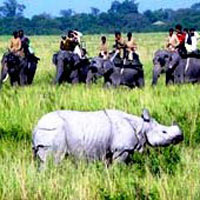 20D/19N
20D/19N
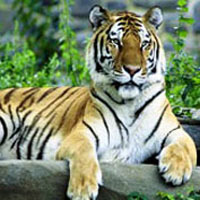 16D/15N
16D/15N
New Delhi - Nagpur - Kanha - Bandhavgarh - Agra - Bharatpur - Ranthambore - Jaipur
 13D/12N
13D/12N
 19D/18N
19D/18N
Wildlife Sanctuary Parks and Cultural Tour
New Delhi - Varanasi - Khajuraho - Bandhavgarh - Agra - Bharatpur - Ranthambore - J..
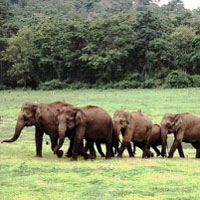 9D/8N
9D/8N
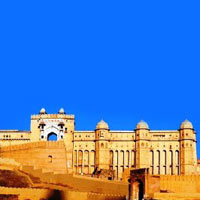 7D/6N
7D/6N
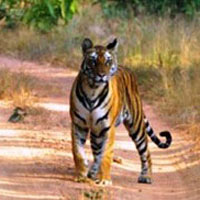 10D/9N
10D/9N
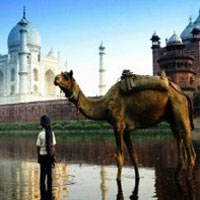 16D/15N
16D/15N
Golden Triangle + Camel Safari Tour
Agra - Bikaner - New Delhi - Jaipur - Jodhpur - Mandawa - Udaipur
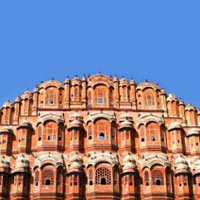 6D/5N
6D/5N
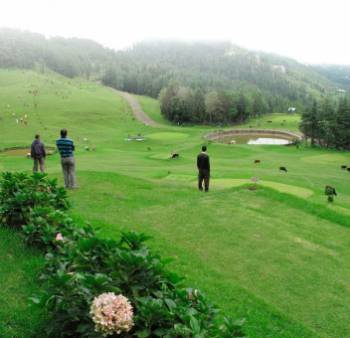 21D/20N
21D/20N
Shimla Mandi Manali Manikaran Jawala G C..
Shimla - Mandi - Manali - Chandigarh City - Kufri - Chail - Solan
 21D/20N
21D/20N
Wildlife Adventure Tours in India
New Delhi - Bharatpur - Agra - Nagpur - Mumbai
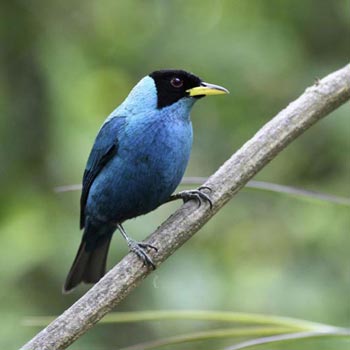 21D/20N
21D/20N
 21D/20N
21D/20N
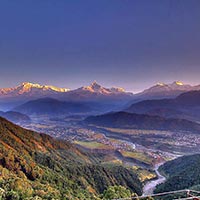 21D/20N
21D/20N
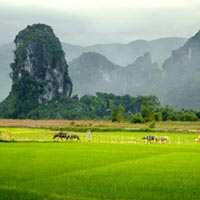 21D/20N
21D/20N
Experience of Vietnam & Cambodia 21 Days..
Siem Reap - Ho Chi Minh City - Cu Chi Tunnel
New Delhi - Agra - Jaipur - Pushkar - Udaipur - Jodhpur - Bikaner - Amritsar - Rana..
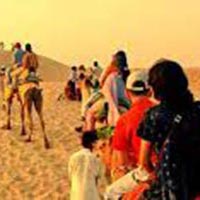 21D/20N
21D/20N
New Delhi - Agra - Jaipur - Pushkar - Sawai Madhopur - Kota - Bundi - Chittorgarh -..
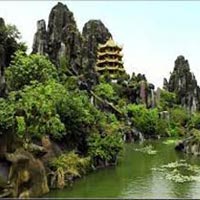 21D/20N
21D/20N
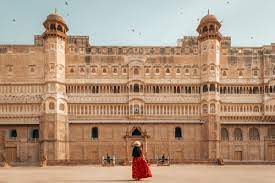 13D/12N
13D/12N
Rajasthan Tour Package 12 Night - 13 Days
Ajmer - Bikaner - Jaipur - Jaisalmer - Jodhpur - Mount Abu - Pushkar - Udaipur
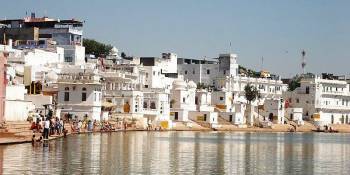 13D/12N
13D/12N
12 Nights Rajasthan Package From Jaipur
Ajmer - Bikaner - Jaipur - Jaisalmer - Jodhpur - Mount Abu - Pushkar - Udaipur
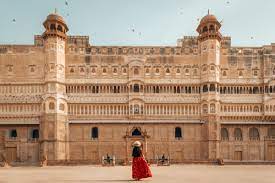 13D/12N
13D/12N
Rajasthan Tour Package 12 Night - 13 Days
Ajmer - Bikaner - Jaipur - Jaisalmer - Jodhpur - Mount Abu - Pushkar - Udaipur
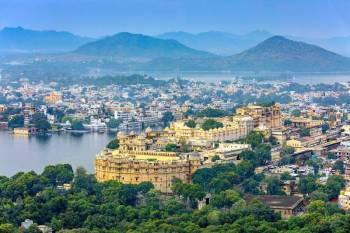 12D/11N
12D/11N
11 Nights 12 Days - Delhi Agra Rajasthan
New Delhi - Mathura - Agra - Jaipur - Ajmer - Pushkar - Udaipur - Mount Abu - Ranak..
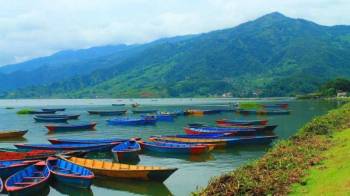 12D/11N
12D/11N
11 Nights - 12 Days Nepal Tour From Gora..
Prayagraj - Gorakhpur - Varanasi - Ayodhya - Kathmandu - Pokhara - Chitwan - janakpur
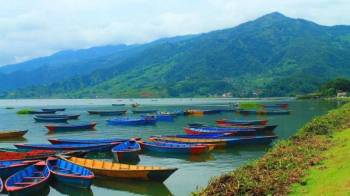 12D/11N
12D/11N
11 Nights - 12 Days Nepal Tour From Gora..
Prayagraj - Gorakhpur - Varanasi - Ayodhya - Kathmandu - Pokhara - Chitwan - janakpur
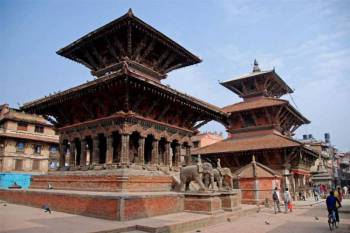 12D/11N
12D/11N
11 Nights - 12 Days Nepal Tour Package - 2
Prayagraj - Gorakhpur - Varanasi - Ayodhya - Kathmandu - Pokhara - Chitwan - janakpur
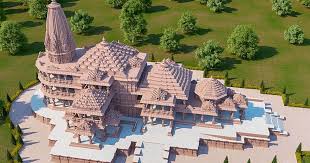 12D/11N
12D/11N
Prayagraj - Varanasi - Bodhgaya - Ayodhya - Pokhara - Chitwan - Parsa
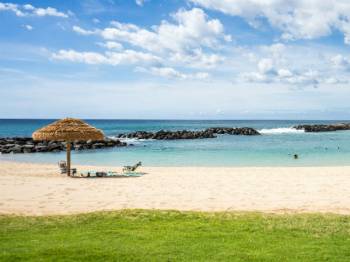 11D/10N
11D/10N
Kerala Tour Package 10 Nights - 11 Days
Kochi - Kovalam - Thekkady - Thiruvananthapuram - Alleppey - Kanyakumari - Munnar